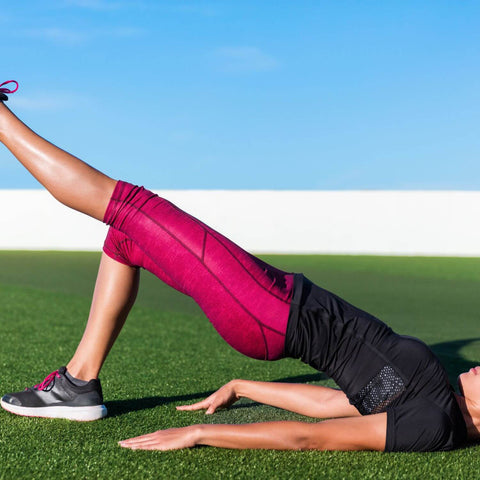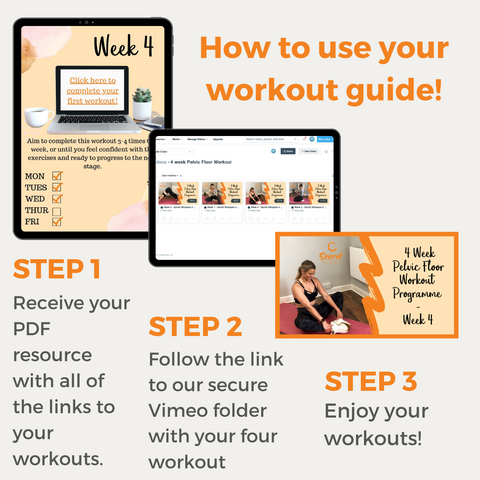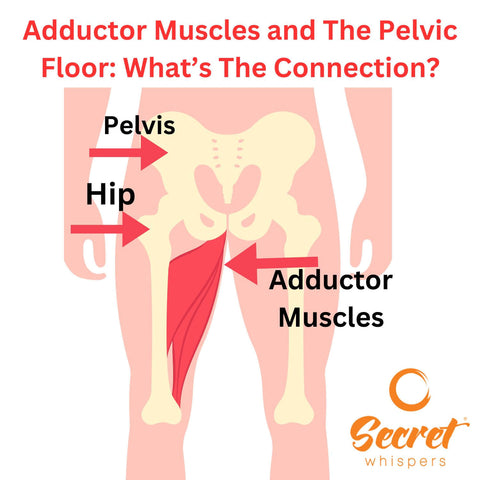Adductor Muscles and The Pelvic Floor: What’s The Connection?
Introduction
The human body is a complex web of interconnected systems, where one group of muscles often influences the function of another. In this exploration, we dive into the intriguing relationship between the adductor muscles and the pelvic floor.
These seemingly unrelated muscle groups are more connected than you might think.
Let's uncover the insights into their interplay and how it impacts your overall health.
What Are Your Adductor Muscles?
The adductor muscles might not be as commonly talked about as biceps or abs, but they play a crucial role in our daily movements. These muscles are a group of muscles situated in the inner thighs, responsible for pulling the femur (thigh bone) towards the body's midline at the hip joint. This action is known as adduction.
The adductors comprise a network of muscles, including the adductor longus, adductor brevis, adductor magnus, gracilis, and pectineus.

The Link Between Your Adductor Muscles and Pelvic Floor
Here's where things get interesting: the adductor muscles and the pelvic floor share a connection that goes beyond their proximity in the body.
When the pelvic floor muscles are weak, the adductors often step in to compensate for their lack of strength. The pelvic floor, a group of muscles forming a supportive hammock at the base of the pelvis, plays a pivotal role in maintaining bladder control, supporting pelvic organs, and even sexual function.
Weak pelvic floor muscles can lead to issues like urinary incontinence and pelvic organ prolapse.
When these important pelvic floor muscles are not functioning optimally, the adductor muscles try to take on their responsibilities. This can result in imbalances and altered movement patterns. Therefore, it's crucial to address both muscle groups to ensure overall pelvic health.
How to Target Adductor Muscles
Now that we understand the significance of the adductor muscles and their connection to the pelvic floor, let's explore some effective exercises to strengthen these muscles. Incorporating these exercises into your routine can contribute to improved pelvic stability and overall muscular balance.
Remember to incorporate Pelvic Floor Kegel Exercises with each as well for maximum benefits.
1. Standing Circles
Standing circles are a fantastic exercise to engage and strengthen your adductor muscles.
To perform this exercise:
- Stand with feet hip width apart
- Lift one leg off the ground
- While balancing on one leg, create small circles with your lifted leg
- Complete desired reps
- Switch sides
Note: If you have trouble with balancing, stand close to a prop, like a wall, where you can help stabilize your body by holding onto something.
Also, by performing Kegel exercises while doing standing circles can add an extra layer of pelvic floor engagement, creating a holistic workout for both muscle groups.
2. Squat Side Kick
The squat side kick is another powerful exercise to target your adductors. Great to help with groin pain also.
- Start in a squat position with your hands together in front of you
- Stand up and transfer your weight to one leg while kicking out the other leg to the side
- Return to squat position then repeat with opposite leg
- Complete the desired reps
This motion engages the inner thigh muscles and supports the pelvic floor. Remember to maintain proper form and alignment throughout the exercise.
3. Single-Leg Glute Bridge
Engage your adductor muscles while simultaneously activating the pelvic floor with the single-leg glute bridge.

- Lie on your back, bend one knee, and lift the other leg straight up.
- Push through the heel of the bent leg to lift your hips off the ground, creating a diagonal line from your shoulders to your knee.
This exercise not only strengthens the inner thighs but also promotes pelvic stability. Add in Kegel Exercises to get maximum results or even better - Come and join my next 30 Day Pelvic Floor Challenge where you will learn how to do these exercises. Check out what women from the previous groups have said.
4. Seated Hip Adduction
The seated hip adduction exercise technique is an effective way to isolate and target the adductor muscles.
- Sitting up tall, in your chair, position yourself to the middle of the chair. This ensures optimal stability and alignment for the exercise.
- In this position, using either a cushion or a rolled up towel, place this item between your knees.
- Bring your feet in, ensuring they are in line with your knees.
- While holding the cushion lightly with your knees, squeeze the cushion using your knees.
- Hold this for 5 seconds and relax.
- Repeat for the desired repetitions.
5. Sumo Squats
Sumo squats are a variation of the traditional squat that places greater emphasis on the adductor muscles.

- Stand with your feet wider than shoulder-width apart and your toes pointed slightly outward.
- Lower yourself into a squat, keeping your back straight and chest lifted.
- As you rise back up, focus on squeezing your inner thighs together to engage the adductors. This is the ideal time to also incorporate Kegels as well.
Incorporate these exercises into your fitness routine to target and strengthen your adductor muscles, while also supporting your pelvic floor health.
Conclusion
The connection between the adductor muscles and the pelvic floor goes beyond anatomical proximity. These muscle groups are intertwined in their functions, and addressing the strength and balance of both is vital for overall pelvic health.
By focusing on exercises that engage and strengthen your adductor muscles, you can indirectly contribute to the well-being of your pelvic floor.
Remember, a well-rounded approach to fitness and health considers the intricate relationships between different parts of the body.
For more information and guidance on pelvic floor health, check these out:



For further reading, dive into the comprehensive guide on:
- Pelvic Prolapse and Exercise
- The purpose of the Pelvic Floor,
- How to determine if your Pelvic Floor is Weak,
- Whether it's Too Late to Start Pelvic Floor Exercises, and
- Tightening Pelvic Floor Muscles.
Remember, a holistic approach to health encompasses understanding and caring for the intricate connections within our bodies.
For any questions or further assistance, feel free to reach out to us. Your pelvic floor health matters, and we're here to support you on your journey to well-being.
Never miss another blog again. Sign up now to our weekly Newsletter. You will get a 10% discount code to use too. Just click below ⬇️⬇️⬇️













